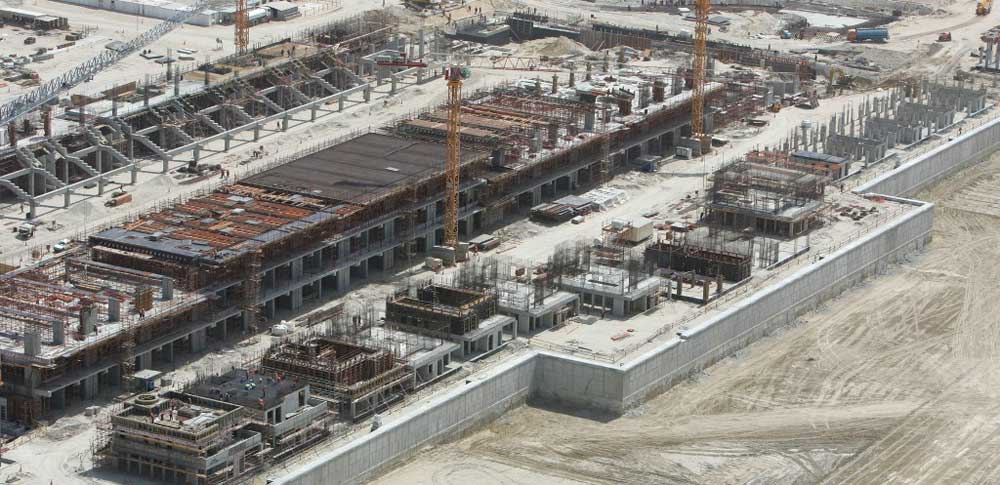US$452 billion infrastructure developments to lead growth of GCC construction industry.
 Other News
Other News Subscribe to newsletter
Subscribe to newsletter
| 17 Apr 2011 |
Infrastructure projects in the GCC countries, currently valued at US$452 billion, can spearhead the growth of the regional construction industry, according to a comprehensive report published in conjunction with CityBuild Abu Dhabi.
Massive investment in infrastructure, 80 percent of this in Saudi Arabia, the UAE and Qatar, is likely to put the other segments of the construction sector, in particular buildings and energy, back on track by 2012, says the report by market research specialists Ventures Middle East.
The major spending by the GCC countries, to meet an increase in demand through a healthy rise in population, has also been used as a weapon to combat the economic slowdown and diversify into non oil based growth for long run sustainability.
Overall in 2010, the report reveals that construction contracts worth a total of US$196 billion were awarded in the GCC region, with buildings, energy and infrastructure projects accounting for 45 per cent, 39 per cent and 16 per cent respectively.
The report says the huge investments on infrastructure have paid off in terms of a modest revival in growth in the Gulf countries, with projects in Abu Dhabi taking the lead role, and countries like Saudi and Qatar using their vast oil backed wealth to diversify and build their industries and services sectors.

Most of the GCC governments are planning large scale infrastructure development and expansion schemes spanning a number of years. These include Saudi’s US$400 billion five-year public investment programme from 2010-2014, Kuwait’s US$107 billion development plan, and Oman’s US$78 billion development plan up to 2015.
At the heart of the enormous regional infrastructure development are rail projects valued at US$106 billion, while marine infrastructure projects are also flourishing, with over US$60 billion worth of maritime projects across the GCC, and the UAE and Saudi leading the way.
Saudi, the second largest sector in terms of market size and the largest in terms of infrastructure spend and growth in 2010, has led the transformation in the GCC infrastructure scenario in recent years with plans to develop six economic cities and other major development schemes.
The country is also experimenting with Public Private Partnerships for financing infrastructure projects in areas such as railway network building, education and healthcare in order to revive economic activity.
With its successful FIFA 2022 World Cup bid, Qatar has shot to prominence in the GCC infrastructure map, and is set to grow its share by allocating 37 percent of its budget towards major capital projects, the bulk of which is for infras
tructure projects.Even the Qatar-Bahrain Causeway, designed to improve links between Qatar, Bahrain and Saudi Arabia before being put on hold due to technical and logistic delays, has begun to make progress, the reports says, giving a shot in the arm to the infrastructure sector development.
The report also underlines how construction across the GCC is now turning “green”, with the focus shifting to sustainability and environmentally friendly impacts.
It points out that many of the GCC countries have introduced voluntary rating systems for projects based on their environmental impacts in tune with international standards. In addition the trend is highlighted by Qatar’s pledge to make all its FIFA 2022 World Cup projects “green”. These includes solar powered “eco-stadiums” which will be dismantled for future use at other sporting events worldwide, and building materials that encourage water conservation and low-carbon transport systems.




